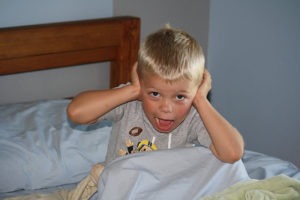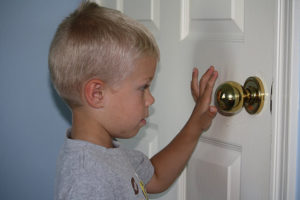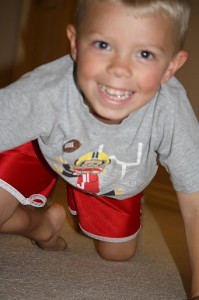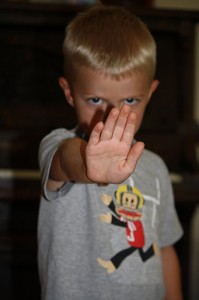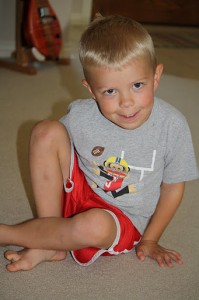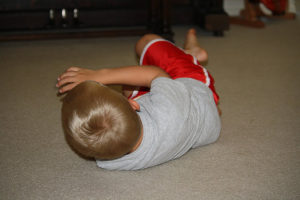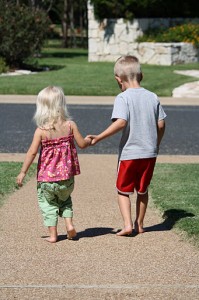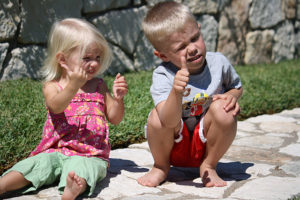Every year the American Red Cross responds to tens of thousands of disasters, the majority of which are single-family fires. Having seen firsthand the devastation caused by seemingly small and insignificant actions (leaving a burning candle unattended, cracking the oven door open to warm the kitchen), fire safety is never far from my mind.
October is Fire Prevention Month, and because my five-year-old son, Will, is now old enough to understand what that means, I decided to put on a “fire drill extravaganza” for him last weekend. (It wasn’t so much of an extravaganza as it was a lesson, but calling it an extravaganza increased the enthusiasm with which he participated.)
Before we began our drill we changed the batteries in our smoke detectors.
Tip: replace the batteries in your smoke detectors every six months, or every time you reset your clocks at the beginning and end of Daylight Savings Time.
We also tested our smoke detectors to make sure they were operational.
Tip: a recent study conducted at Victoria University in Melbourne found that 78% of school-aged children slept through a fire alarm blaring for 30 seconds. Off the 22% who awoke, only half knew the noise was a smoke alarm, and only half of those children knew the alarm meant EVACUATE. Make sure children know what the smoke alarm sounds like, why it goes off, and what to do when they hear it.
And lastly, we walked the entire house, establishing at least two escape routes from every room.
Tip: make sure preschool-and-older children know how to unlock doors and open windows, and explain that – IN AN EMERGENCY – it’s alright to break windows. Then clarify for preschool-aged children that playing baseball in their bedrooms is NOT an emergency.
We began our drill in Will’s bedroom.
I turned on the smoke alarm and Will pretended to wake up.
Will placed his hand NEAR the door to check its temperature. The door was cool, therefore he could exit the room through the door. If the door had been warm or hot, he’d have used an alternate exit from the room. (Will begged for the hot-door scenario, I assume because he was hoping for a justifiable reason to swing his baseball bat through the window.)
When Will came out into the hallway I told him it was full of smoke, so he dropped below the fictional smoke and crawled down the hall and through the living room. (He looks like he’s having fun, doesn’t he?)
At that point we pretended his clothes caught on fire, so he stopped, dropped, and rolled for like six minutes. Will has since been informed and understands that in an actual fire he’d do this very quickly and then continue out of the house, but during our drill I let him stop, drop, and roll to his heart’s content.
After extinguishing the fire, Will calmly exited the house and safely crossed the street to our meeting spot. Like a good big brother, he took his little sister – who had absolutely no idea what was going on – with him.
We reviewed how to call 911, what to tell the 911 operator, and that we never go back into the house for ANYTHING, even our Batman cape.
After the drill we talked about what to do differently next time, and then twice throughout the next couple of hours I turned the smoke alarm back on and let Will run through the whole shebang again. At the end of the day, I felt considerably better about our family’s fire preparedness, and my kids gave the activity two thumbs up.
Want to put on your own Fire Drill Extravaganza? Click here for more information about fire prevention, preparedness, and safety from the American Red Cross.

